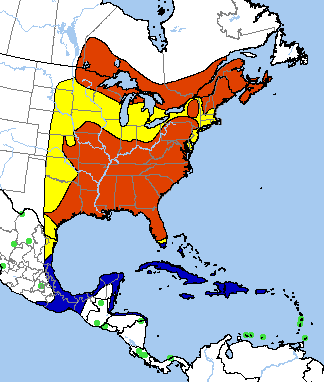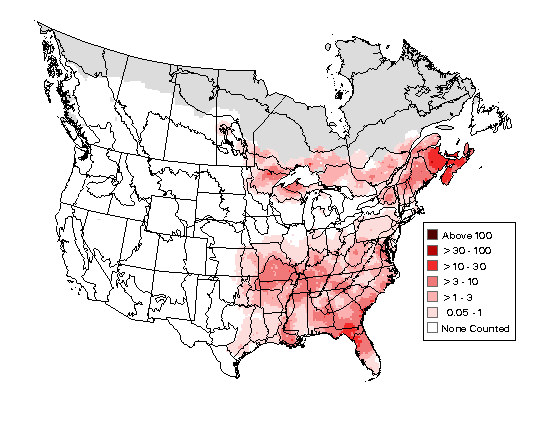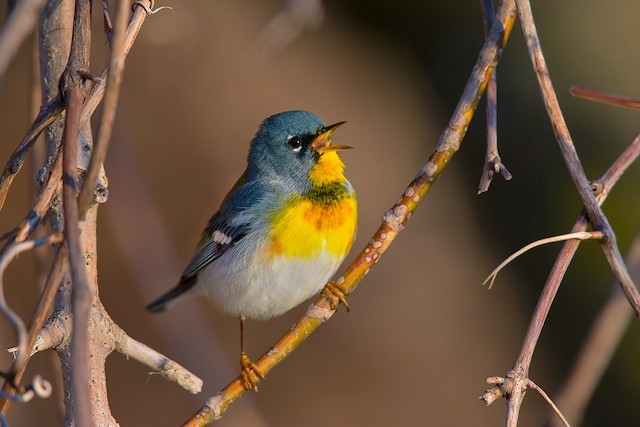
Rising trill (the classic). © John Middleton
Alternate song. © Paul Marvin
Variant with elements of both typical song types. © J.R. Rigby
Birdfinding.info ⇒ Common across large portions of the eastern U.S. and southeastern Canada from April to September. One of the commonest warblers during spring migration along the Eastern Seaboard, usually detected by its signature trill issuing from the treetops. Its highest breeding densities occur in the Canadian Maritimes and the Deep South (see Breeding Bird Survey Abundance Map in Notes, below). In winter, it is very common throughout the Greater Antilles.
Northern Parula
Setophaga americana
Breeds in eastern North America. Winters in the West Indies and Middle America.
Breeding. Various forest types from southeastern Manitoba to Nova Scotia and south to central Texas and southern Florida, but mostly absent from the southern Great Lakes region and southern New England. Largely associated with coniferous forests in the north, but deciduous forests and swamps in the south.
Its breeding habitats and distribution roughly correspond to the availability of certain mosses and lichens (mainly Usnea lichens in the north and Spanish Moss in the southeastern U.S.) that it uses in nest construction.
Nonbreeding. Winters in various types of woodlands, including mangroves, as well as brush and edge habitats. The bulk of the global population winters in the West Indies, north to central Florida and east to the Virgin Islands, with progressively decreasing numbers southeast into the Leeward Islands to around Martinique. Also common on Isla Providencia and San Andrés, and regular on the ABC Islands, but almost unknown from South America.
A smaller but significant fraction of the population winters on the continent from Veracruz and Oaxaca east through the Yucatán Peninsula to northern Honduras, and rarely south to Costa Rica.
Movements. Most migration is east of the Appalachians, both northbound and southbound. A regular vagrant across much of the western U.S., especially in coastal California, where small numbers often winter—and, on several occasions, have remained to breed. Also an occasional fall vagrant to western Europe and Macaronesia.
Identification
A small, plump wood warbler with a thin, sharp-tipped bill. In all plumages, it has mostly blue-gray upperparts with an olive patch on the back, white crescents above and below the eye, two prominent white wingbars, a mostly golden-yellow throat and chest, and a white lower breast and belly.
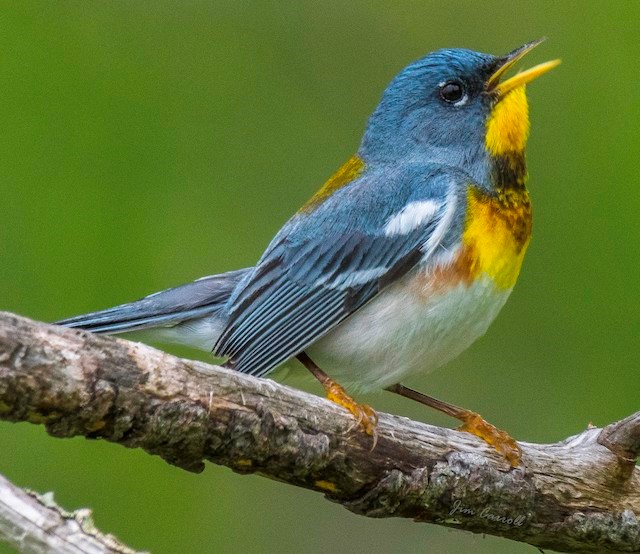
Northern Parula, male in breeding plumage—note atypically tiny eye crescents. (Little Beach, New Brunswick; July 1, 2018.) © Jim Carroll
Breeding males have a distinctive dark bib that usually consists of blackish band across the base of the throat and a chestnut band across the upper chest.
The details of pattern and coloration in the male’s bib are highly variable—some are narrow, some are wide, some are bold, some are diffuse, some are orange instead of chestnut, some have little or no black, etc. (see examples in accompanying photos).

Northern Parula, male in breeding plumage, showing a fully developed bib with broad black and chestnut bands. (Clark Point Road, Tremont, Maine; June 7, 2018.) © Stephen Knox

Northern Parula, male in breeding plumage, showing a bib of blended colors. (Pricketts Fort State Park, West Virginia; April 16, 2017.) © Joey Herron
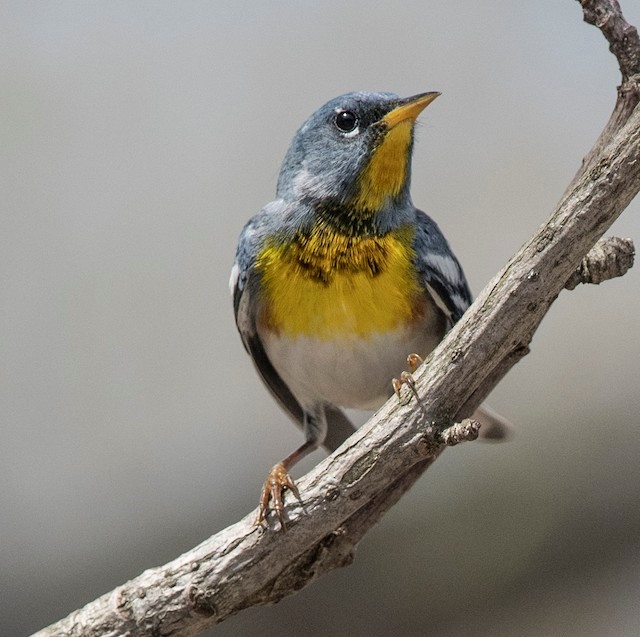
Northern Parula, male in breeding plumage, showing an all-blackish bib with an irregular pattern. (Rock Cut State Park, Illinois; April 24, 2017.) © John Longhenry
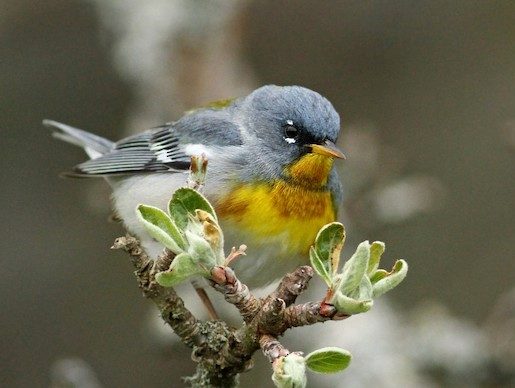
Northern Parula, male in breeding plumage, showing a narrow black throat collar, with chestnut above and below. (Monhegan Island, Maine; May 14, 2011.) © Luke Seitz

Northern Parula, male in breeding plumage. (Hardee Lakes Park, Fort Green, Florida; February 27, 2016.) © Clifton Kahler

Northern Parula, male in breeding plumage, showing well-defined olive patch on back. (Leonabelle Turnbull Birding Center, Port Aransas, Texas; April 3, 2017.) © Curtis McCamy

Northern Parula, male in breeding plumage, with a typical bib with diffuse patches of color. (Key Largo, Florida; April 13, 2017.) © Tasha Trujillo
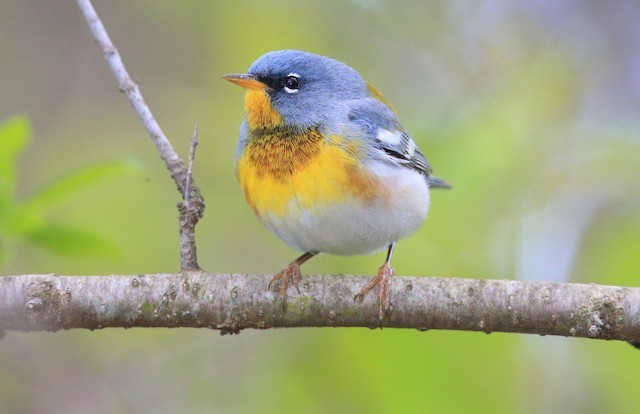
Northern Parula, male in breeding plumage. (Lake Erie Metropark, Wayne County, Michigan; May 15, 2016.) © Brendan Klick
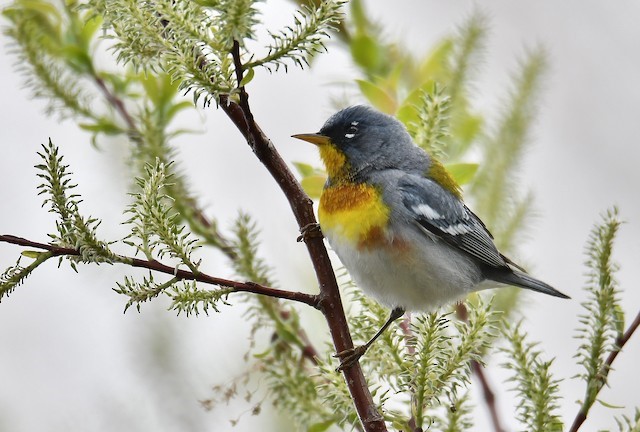
Northern Parula, male in breeding plumage, showing many small patches of color. (Stephen-Langevin Arboretum, Boucherville, Quebec; May 12, 2017.) © André Lanouette
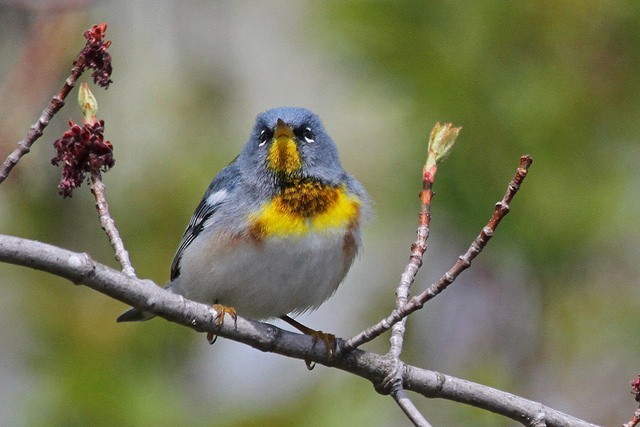
Northern Parula, male in breeding plumage, showing narrow patches of color on throat and chest. (Plum Island, Massachusetts; May 9, 2015.) © Jeffrey Offermann
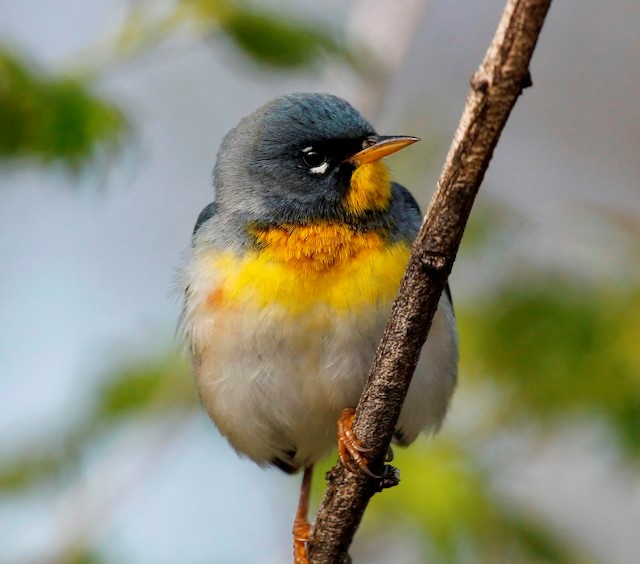
Northern Parula, male in breeding plumage, with narrow black throat band and orange in place of chestnut. (Lake Park, Milwaukee, Wisconsin; May 16, 2015.) © Matt Baumann

Northern Parula, male in breeding plumage, with an unusually faint bib. (Harris Neck National Wildlife Refuge, Georgia; March 5, 2018.) © Randall McCarthy
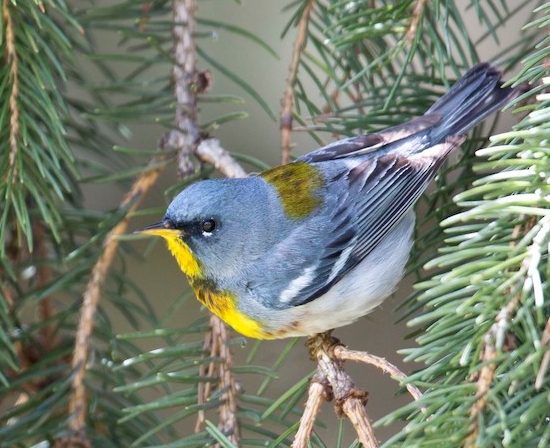
Northern Parula, male in breeding plumage, showing well-defined olive patch on back. (Brittania Conservation Area, Ottawa, Ontario; May 10, 2017.) © Tom Devesceri

Northern Parula, male in breeding plumage, showing crisply delineated patches of color. (June 21, 2018.) © Denis
Females and nonbreeding males are similar to one another, both less-vivid versions of the breeding male plumage. The males tend to show a washed-out, but detectable bib, and some black in the lores. Females can also show a faint version of the male’s bib.
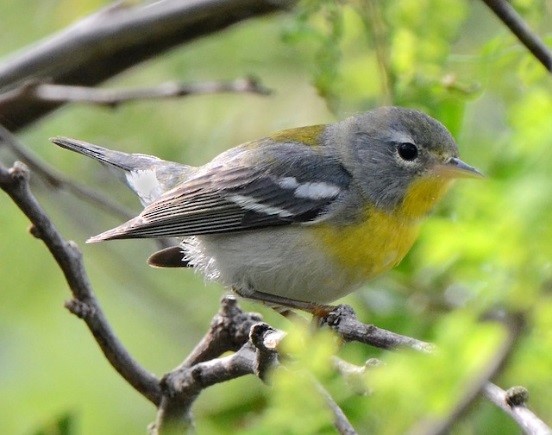
Northern Parula, female. (Spaans Lagoon, Aruba; April 12, 2013.) © Steven Mlodinow
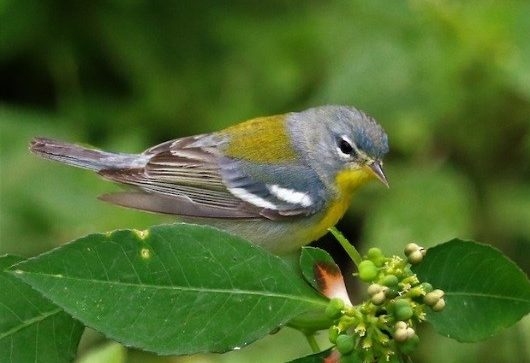
Northern Parula, female. (South Padre Island, Texas; April 8, 2018.) © Ann Vaughan
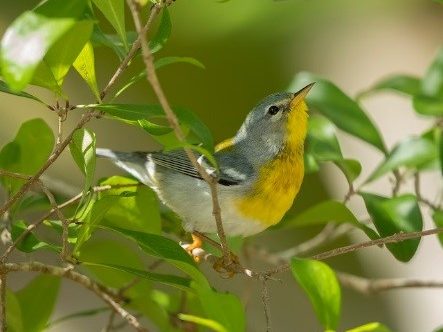
Northern Parula, female—showing traces of a bib, but on a spring date when males are much darker. (Point Ybel Lighthouse Beach Park, Sanibel Island, Florida; April 6, 2018.) © Peter Hawrylyshyn
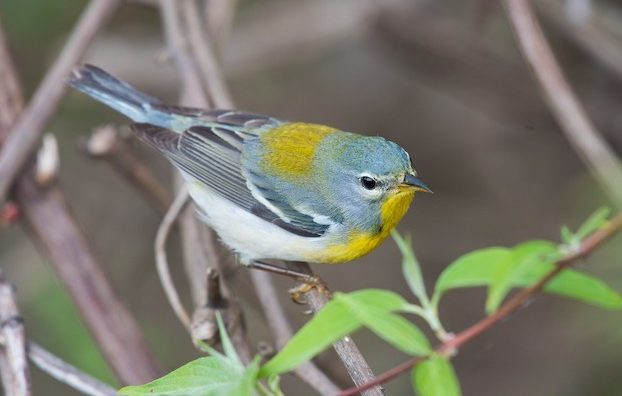
Northern Parula, female. (Magee Marsh, Ohio; May 12, 2016.) © Adam Jackson

Northern Parula, male in nonbreeding plumage, with a faintly colored bib. (Mount Pleasant Lodge, Central Andros, Bahamas; December 9, 2015.) © Michael Bolte

Northern Parula, male in nonbreeding plumage, with a partial bib. (Santo Domingo, Dominican Republic; December 9, 2013.) © Dax M. Román E.
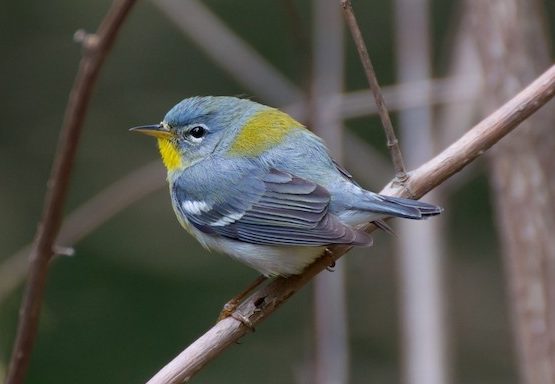
Northern Parula, female—note absence of black in the face. (Mount Auburn Cemetery, Boston, Massachusetts; May 13, 2014.) © Frank Lehman

Northern Parula, female. (River Ridge Road, Volusia County, Florida; April 8, 2018.) © Bruce Cochrane
Immatures have a more washed-out version of the adult plumages—so washed-out that it is not always immediately recognizable. The most pronounced difference is that the upperparts are typically suffused with green.
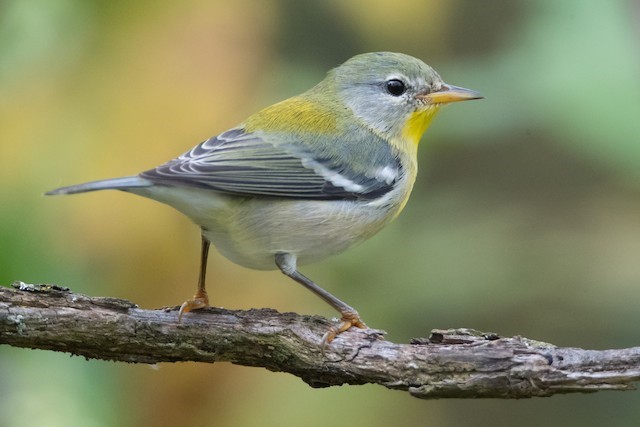
Northern Parula, immature. (Matthaei Botanical Gardens, Ann Arbor, Michigan; September 19, 2017.) © Brendan Klick
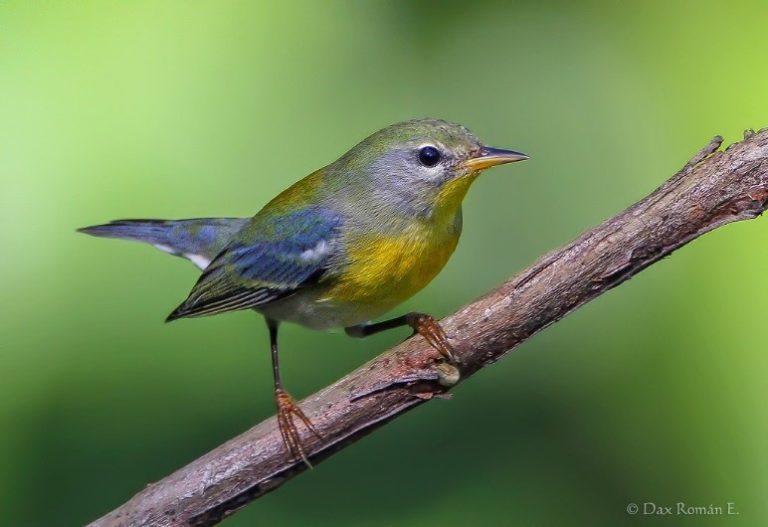
Northern Parula, immature. (Lomas Lindas, Dominican Republic; November 9, 2013.) © Dax M. Román E.

Northern Parula, immature. (Yamaska, Quebec; September 6, 2017.) © André Lanouette
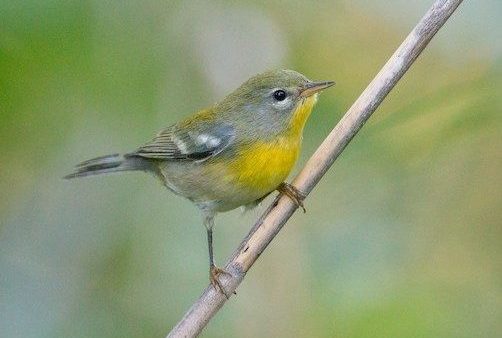
Northern Parula, immature. (Long Point National Park, Ontario; September 4, 2016.) © Ian Davies

Northern Parula, immature. (National Botanical Garden, Santo Domingo, Dominican Republic; December 5, 2013.) © Dax M. Román E.
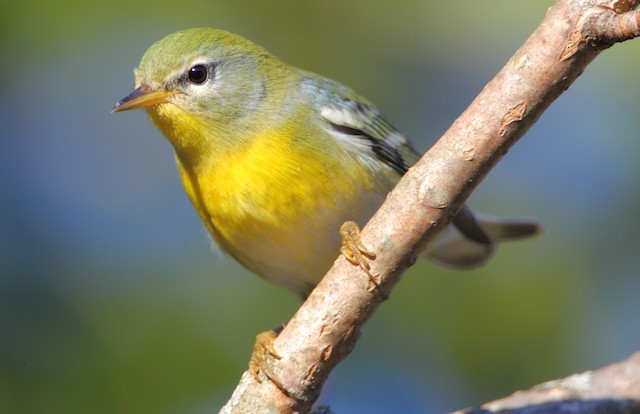
Northern Parula, immature. (Matthaei Botanical Gardens, Ann Arbor, Michigan; September 22, 2015.) © Brendan Klick
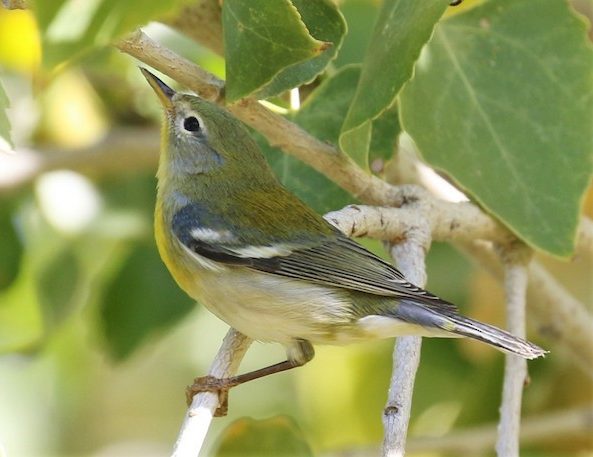
Northern Parula, immature. (Riparian Preserve at Gilbert Water Ranch, Gilbert, Arizona; October 29, 2017.) © Laura Ellis

Northern Parula, immature. (Isla Providencia, Colombia; November 30, 2017.) © Rafael Tosi
Cf. Tropical Parula. The various forms of Tropical Parula resemble female and nonbreeding Northern Parulas enough to cause confusion wherever they might occur together. In general, the most consistent distinguishing features are:
Eye Crescents: Northern Parula usually shows distinct white crescents above and below the eye; Tropical does not. However, in some cases Northern’s crescents may be inconspicuous or absent.
Yellow Underparts: On Northern, the yellow ends around mid-breast, whereas the lower breast and belly are white. There is some variation among the different forms of Tropical, but as a rule, the yellow extends down to the belly.
Throat: The yellow area on Northern’s throat is narrower than on Tropical, as Northern has a fuller gray “helmet” that extends farther down on the neck than on Tropical.
Notes
Monotypic species.
References
Alderfer, J., and J.L. Dunn. 2014. National Geographic Complete Birds of North America (Second Edition). National Geographic Society, Washington, D.C.
Dunn, J.L., and K.L. Garrett. 1997. A Field Guide to Warblers of North America. Houghton Mifflin, Boston.
eBird. 2019. eBird: An online database of bird distribution and abundance. Cornell Lab of Ornithology, Ithaca, N.Y. http://www.ebird.org. (Accessed March 31, 2019.)
Fagan, J., and O. Komar. 2016. Peterson Field Guide to the Birds of Northern Central America. Houghton Mifflin Harcourt, New York.
Garrido, O.H, and A. Kirkconnell. 2000. Field Guide to the Birds of Cuba. Cornell University Press, Ithaca, N.Y.
Haynes-Sutton, A., A. Downer, R. Sutton, and Y.-J. Rey-Millet. 2009. A Photographic Guide to the Birds of Jamaica. Princeton University Press, Princeton, N.J.
Howell, S.N.G., and S. Webb. 1995. A Guide to the Birds of Mexico and Northern Central America. Oxford University Press, Oxford.
Latta, S., C. Rimmer, A. Keith, J. Wiley, H. Raffaele, K. McFarland, and E. Fernandez. 2006. Birds of the Dominican Republic and Haiti. Princeton University Press, Princeton, N.J.
Raffaele, H. 1989. A Guide to the Birds of Puerto Rico and the Virgin Islands. Princeton University Press, Princeton, N.J.
Raffaele, H., J. Wiley, O. Garrido, A. Keith, and J. Raffaele. 1998. A Guide to the Birds of the West Indies. Princeton University Press, Princeton, N.J.
Wells, J.V., and A.C. Wells. 2017. Birds of Aruba, Bonaire, and Curaçao. Cornell University Press, Ithaca, N.Y.
